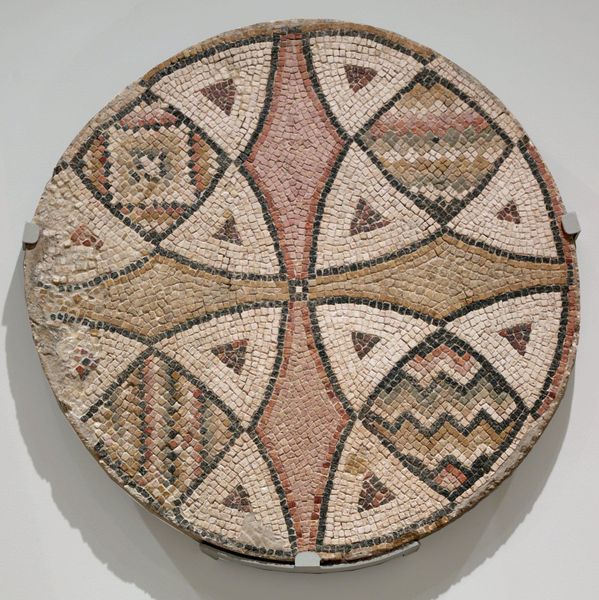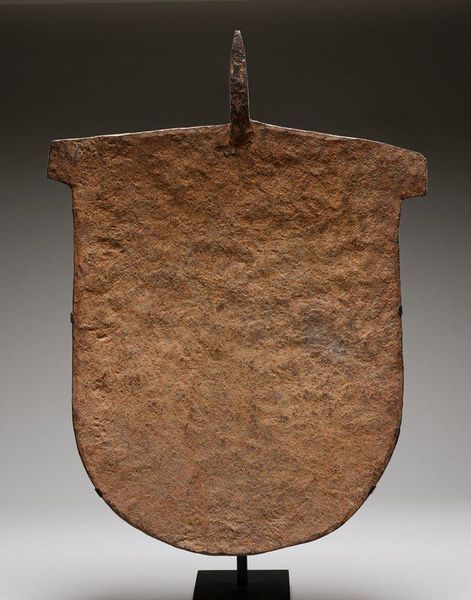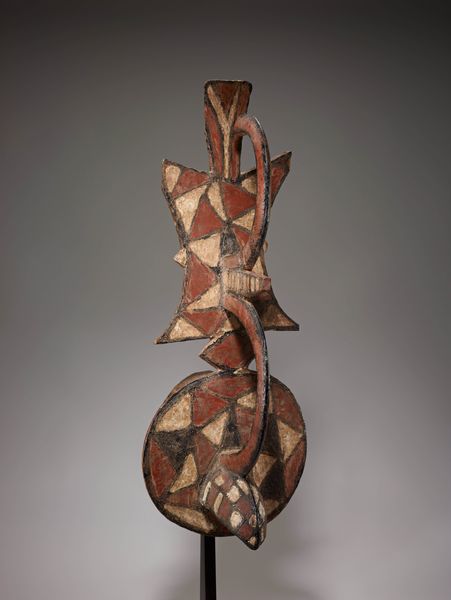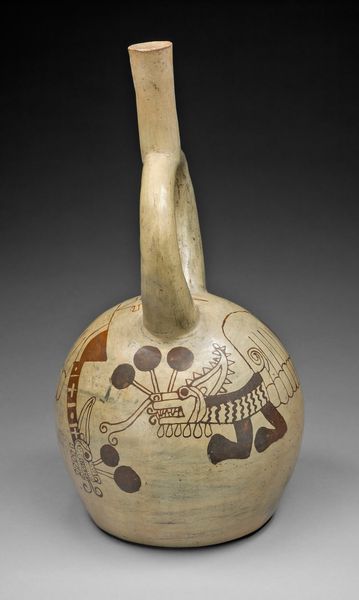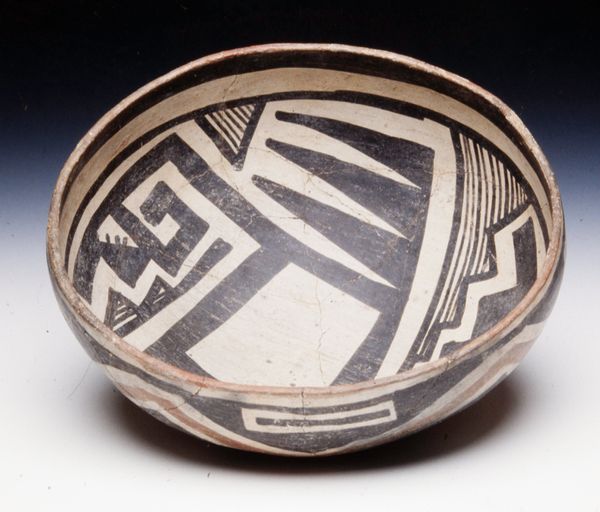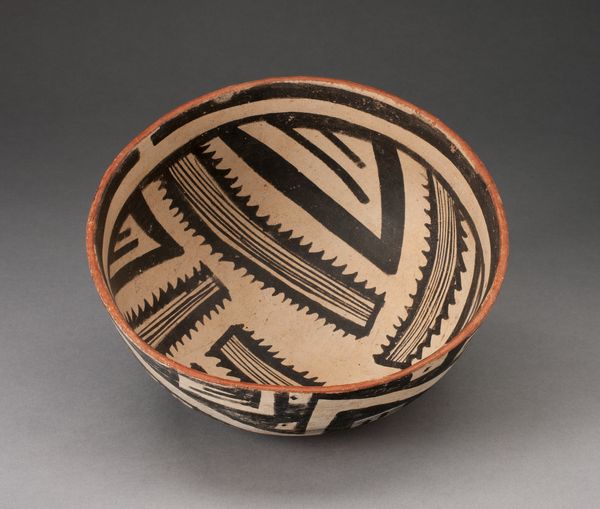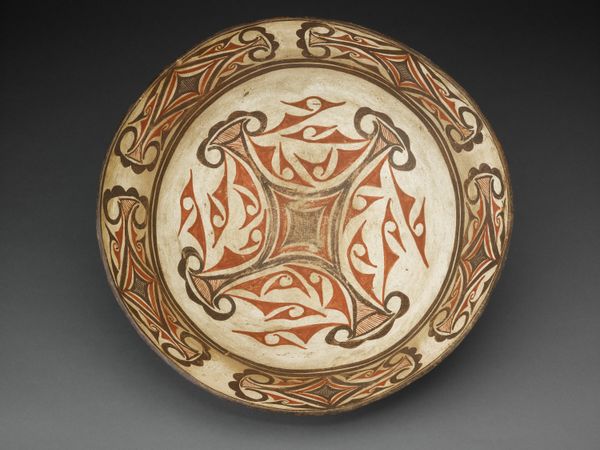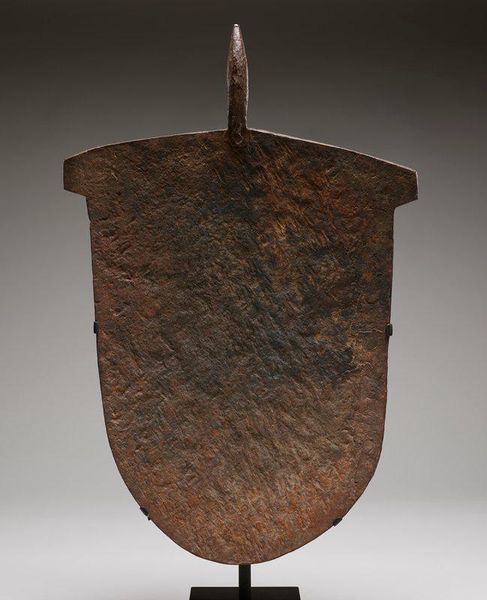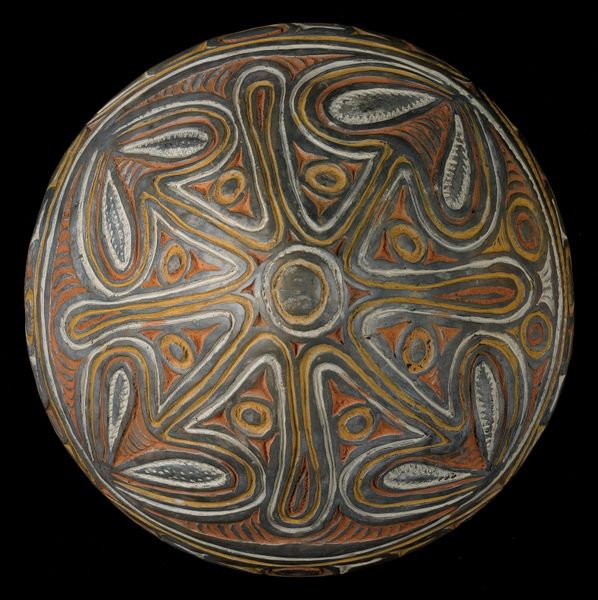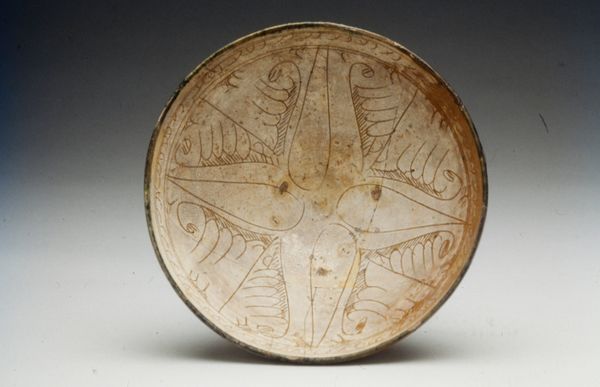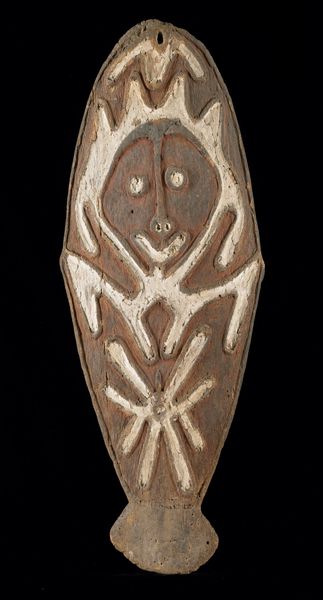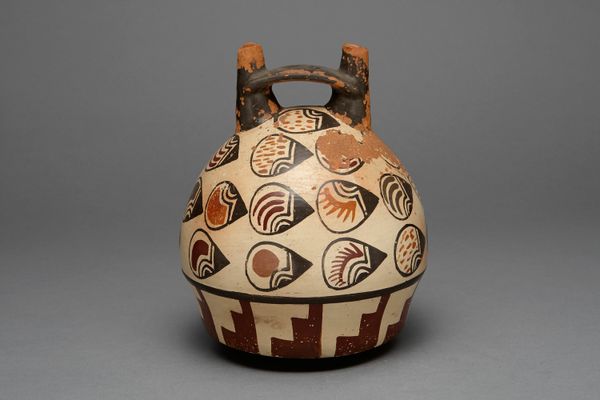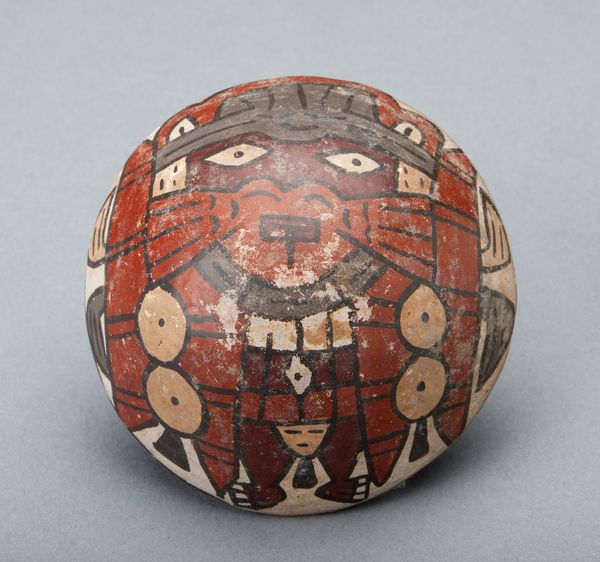
carving, wood
#
carving
#
geometric
#
wood
Dimensions: 23 1/4 × 16 1/2 × 4 in. (59.06 × 41.91 × 10.16 cm)
Copyright: No Known Copyright
Curator: Welcome. Before us is a "Carved Wooden Dance Shield (ndomi)" made by the Kikuyu people, circa mid-20th century. Editor: It strikes me as incredibly austere, almost haunting. The muted palette and those precise, linear forms are compelling. The texture of the wood also adds depth. Curator: Indeed. The ndomi were important cultural artifacts in Kikuyu society. Shields such as this would be commissioned for specific dances, integral to community rituals and expressions of identity, power and social cohesion. The performances and costumes would be displays of local culture and historical pride. Editor: Function within these rituals seems integral to its form. Observe how the symmetry reinforces a sense of balance and containment. What I find fascinating is that central, almost vulvar shape; a dark point around which everything seems to constellate. Curator: It's also important to consider that what appears to be stark minimalism to our eyes, viewing this object in a gallery setting, carries layered cultural meaning. Motifs and materials link directly to community values and historical events. Even something as simple as the kind of wood used might signal lineage or territorial claims. The zig zag may represent scars earned in battle. Editor: Speaking of scars, notice all the tiny holes that permeate the surface. I'd initially considered this to be a stylistic detail, but now that you mention historical connections, they make the object that much more powerful. What narratives could we derive from that material aging? Curator: I agree that it's a fascinating paradox, isn't it? This object, seemingly simple at first glance, has deep socio-political underpinnings, revealing complex narratives if we consider its original usage. The dance tradition itself may have evolved in resistance to colonial influence, and that zig zag can be viewed as representing a resistance towards an invader. Editor: Well, that's art history illuminating form! This has deepened my initial appreciation by connecting those formal observations to the lived experiences embedded in the artwork's function and cultural importance. Curator: Precisely! It reveals the ongoing vitality and layered historical context of such traditions when placed within the broader tapestry of Kikuyu social dynamics.
Comments
minneapolisinstituteofart almost 2 years ago
⋮
African shields, while primarily functional objects used in warfare, also played a role as dance regalia during funerals and initiations, and served as status objects and symbols of identification. Because they were often made for ostentatious display, their appearance—size, decoration, color, and materials—was of vital importance. As such, shields can be appreciated as sculptural expressions of creativity and craftsmanship, blurring the line between utilitarian skill and fine art.
Join the conversation
Join millions of artists and users on Artera today and experience the ultimate creative platform.
